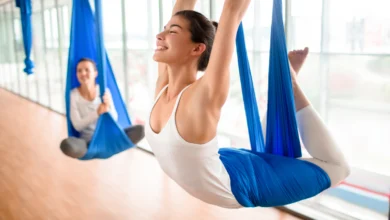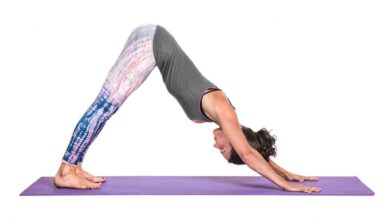Understanding and Healing ‘Yoga Butt’
Navigating the discomfort commonly known as ‘Yoga Butt’ can be a trickier aspect of your yoga journey. Despite yoga’s vast benefits for both physical and mental health, certain poses might lead to injuries if not practiced with caution. Among these, ‘Yoga Butt,’ a non-medical term, describes an overuse injury prevalent in regular practitioners. The injury itself is straightforward and emerges from the repetition of basic yoga poses. Discover the ins and outs of this condition, its symptoms, causes, and ways to alleviate it in the following read.


**What is yoga butt?**
Jenni Tarma, a Yoga Medicine therapeutic specialist, defines ‘Yoga Butt’ as proximal hamstring tendinopathy. This condition involves the irritation or inflammation of the hamstring tendons at their joining point to the ischial tuberosity, or sitting bone. While acute injuries like sprains or tears can occur, ‘Yoga Butt’ typically reflects a chronic tendinopathy developing over time.
**What induces these injuries?**
The practice of yoga, specifically the repetition of poses requiring extensive hip flexion, stands as a primary cause. Essential to note are:
– Deep Forward Fold
– Compass Pose
– Splits
– Any pose with the foot behind the head
These poses can overstress tendons due to their limited elasticity, leading to irritation, explains Tarma. Additionally, single-leg stances and hip rotations in yoga can provoke strains in the high hamstring, glute rotators, and trigger piriformis syndrome, according to physical therapist Leada Malek. If the coordination among glutes, hip rotators, and hamstrings is disrupted due to pain or weakness, symptoms might arise in response to the compensatory effort.
Yoga routines typically lack hamstring strengthening exercises. The frequent accent on stretching, without balancing with strengthening, can aggravate the issue by reducing overall function and tolerance to stress, adds Tarma.
**Identifying injury symptoms**
Recognizing ‘Yoga Butt’ involves understanding the unique pain and discomfort it brings. Symptoms often include a deep ache around the glute or sit bone or sensations akin to a mild strain. Malek highlights that the piriformis muscle could also create sciatic symptoms, such as tingling or numbness down the leg, due to its proximity to the sciatic nerve.
**Healing measures**
Recovering from ‘Yoga Butt’ entails a balance of rest and gradual engagement in strength-building routines. Initially, avoiding poses that exacerbate symptoms and possibly using compression wraps is advised by Tarma. As inflammation lessens, incorporating tissue-loading exercises will aid in the hamstrings’ recovery, enabling a higher tolerance to stress and improved functionality.
**Alternative practices**
Adjusting your yoga poses or temporarily adopting alternative sequences may help in recovery. Suggestions include the Bridge Pose for glute activation and modified Tree Pose for simpler balance to aid in hip stabilization. Advanced poses like the Deep Single Leg Chair Pose should be approached cautiously.
**Preventative steps**
Adopting slight modifications to your practice, such as maintaining a microbend in your knees and not pushing too deep into poses, can significantly reduce the risk. In cases of existing discomfort, halting the stretch or opting for gentler movements is key.
**Final thoughts**
‘Yoga Butt’ doesn’t have to sideline your practice. Recognizing the signs, incorporating strengthening routines, and modifying poses can help you navigate and overcome this injury, ensuring you continue to enjoy the broad spectrum of yoga’s benefits.




